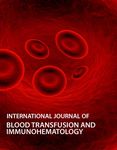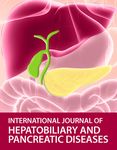Kaposi sarcoma Lyndie Wilkins Parker, Sandra Mele
←
→
Page content transcription
If your browser does not render page correctly, please read the page content below
Int J Case Rep Images 2022;13:101278Z01LP2022. Parker et al. 1
www.ijcasereportsandimages.com
CLINICAL IMAGE PEER REVIEWED | OPEN ACCESS
Kaposi sarcoma
Lyndie Wilkins Parker, Sandra Mele
CASE REPORT
A 47-year-old heterosexual man with history of
intravenous (IV) methamphetamine use presented to the
Emergency Department with dyspnea and raised lesions
throughout his arms, legs, and chest as depicted in Figure
1. Biopsy of a right leg lesion demonstrated atypical
vascular proliferation within the dermis producing
slit-like/irregular architecture consistent with Kaposi
sarcoma. Human herpesvirus 8 (HHV-8) staining was
consistent with Kaposi sarcoma. HIV-1 antibody testing
was positive and the patient had an absolute CD4 count of
19. Kaposi sarcoma is relatively rare in the United States
as antiretroviral therapy has become more accessible. The
appearance of a vascular tumor with inflammation and
mucosal involvement should raise suspicion for HHV-8.
DISCUSSION
Kaposi sarcoma (KS) is a rare type of cancer associated
with vascular tumors secondary to infection of human
herpesvirus 8 (HHV-8). There are four epidemiologic
forms of KS, all of which are attributed to infection with
HHV-8 [1, 2]. In HIV patients, KS is the most common
tumor and is considered to be an AIDS-defining illness.
Since the initiation of widespread antiretroviral therapy
(ART), incidence of KS has rapidly declined [3]. Typically,
AIDS-related KS is more common in homosexual or
Figure 1: Systemic cutaneous appearance of Kaposi sarcoma.
bisexual men, while seen less frequently in heterosexual
injection drug users. The most important predisposing
factor related to AIDS-KS is the CD4 count [4].
AIDS-KS can present in a multitude of clinical
conditions—ranging from asymptomatic to rapidly
Lyndie Wilkins Parker1, DO, Sandra Mele2, DO
progressive. Manifestations can be seen in the oral cavity,
lung, lymph nodes, and gastrointestinal tract in the
Affiliations: 1Internal Medicine Resident, Mountain Vista Medi-
disseminated form [2].
cal Center, Midwestern University-OPTI, Mesa, Arizona, USA;
When evaluating a patient for KS, the physical exam
2
Hospitalist, Mountain Vista Medical Center, Internal Medi-
cine, Mesa, Arizona, USA. is paramount. Identifying lesions in the most typical
locations—lower extremities, face, and mucosa—is
Corresponding Author: Lyndie Wilkins Parker, 1301
essential to staging and targeting treatment. Some societies
S. Crismon Road, Mesa, Arizona 85209, USA; Email:
Lyndieparker9@gmail.com recommend measuring the largest lesion if possible, but
due to confluence of KS lesions this is not always practical
[2]. Further testing should be guided by both symptoms
Received: 07 October 2021 and lab abnormalities. Fecal occult blood testing is the
Accepted: 19 December 2021 best initial indicator for gastroenterological involvement,
Published: 03 January 2022 with positive screening requiring endoscopy for further
International Journal of Case Reports and Images, Vol. 13, 2022. ISSN: 0976-3198Int J Case Rep Images 2022;13:101278Z01LP2022. Parker et al. 2
www.ijcasereportsandimages.com
investigation. Chest X-ray is the primary modality used CONCLUSION
to screen for pulmonary lesions, with bronchoscopy
reserved for those found to have abnormalities. CD4 Cases of Kaposi sarcoma have greatly decreased with
count and HIV viral load are important in both staging introduction of HIV therapies. Identification, staging,
and prognosis [2, 3, 5, 6]. and treatment are paramount to preventing progression
Staging for KS is based on the AIDS Clinical Trial of both HHV-8 and HIV.
Group (ACTG) of the National Institute of Health. It
is divided into three considerations: extent of tumor, Keywords: Antiretroviral therapy, HHV-8, HIV, Kaposi
immune status, and severity of systemic symptoms [2]. sarcoma
While societies disagree on the significance of the immune
status of the patient, most societies are in agreement that How to cite this article
it does have an important role, with the general consensus
appreciating that improvement in CD4 count can lead to Parker LW, Mele S. Kaposi sarcoma. Int J Case Rep
regression and better response of KS to therapies. Images 2022;13:101278Z01LP2022.
Prevention of disease progression, symptom palliation,
and shrinkage of tumor are the main goals of treatment
[2]. All patients should be started on combination of Article ID: 101278Z01LP2022
ART. In some patient populations, the initiation of ART
can be the only treatment required, whereas others will *********
require more systemic modalities. With the widespread
use of ART therapies, the incidence of KS has rapidly doi: 10.5348/101278Z01LP2022CI
declined [2]. The effectiveness of ART leading to immune
reconstitution is thought to be the underlying mechanism. *********
With initiation of ART therapy, there is the risk of
immune reconstitution inflammatory syndrome. As such,
the initiation of ART therapy often requires concurrent REFERENCES
local treatment of KS as well. However, even in patients
1. Dezube BJ. Clinical presentation and natural history
chronically on ART with appropriate CD4 counts, KS
of AIDS-related Kaposi's sarcoma. Hematol Oncol
has been identified. Thus, some patients require further Clin North Am 1996;10(5):1023–9.
treatment beyond systemic immune support [2]. 2. Groopman JE. AIDS-related Kaposi sarcoma: Staging
Local therapy is targeted at decreasing the tumor and treatment. UpToDate 2021. [Available at:
burden and cosmetic improvement. The three major uptodate.com/contents/aids-related-kaposi-sarcoma
forms of local therapy are intralesional chemotherapy, -staging-and-treatment?search=kaposi+sarcoma]
radiation therapy, and topical alitretinoin. Intralesional 3. Mocroft A, Kirk O, Clumeck N, et al. The changing
chemotherapy with vinblastine is used in small lesions pattern of Kaposi sarcoma in patients with
with regression noted on average four months after the HIV, 1994–2003: The EuroSIDA Study. Cancer
2004;100(12):2644–54.
initial injection. Radiation treatment is often reserved for
4. Gbabe OF, Okwundu CI, Dedicoat M, Freeman EE.
patients with extensive KS that would not benefit from Treatment of severe or progressive Kaposi's sarcoma
localized chemotherapy injection, but not widespread in HIV-infected adults. Cochrane Database Syst Rev
enough to necessitate systemic therapy. Patients with 2014;(9):CD003256.
widespread KS do not benefit from radiation therapy. 5. Krown SE, Metroka C, Wernz JC. Kaposi's sarcoma
Topical alitretinoin is effective for cutaneous KS lesions, in the acquired immune deficiency syndrome: A
but is now rarely used due to pigmentation changes and proposal for uniform evaluation, response, and
inflammation [2]. staging criteria. AIDS Clinical Trials Group Oncology
Systemic therapy is reserved for patients with Committee. J Clin Oncol 1989;7(9):1201–7.
6. El Amari EB, Toutous-Trellu L, Gayet-Ageron A, et
rapidly progressive or advanced KS. The most common
al. Predicting the evolution of Kaposi sarcoma, in
indications for systemic therapy are the presence of more the highly active antiretroviral therapy era. AIDS
than 25 lesions, cutaneous KS that is unresponsive to 2008;22(9):1019–28.
localized treatment, immune reconstitution inflammatory
syndrome, and progression of KS on ART. The risks of *********
further immunosuppression and insult must be weighed
carefully in each patient. While pegylated liposomal Author Contributions
doxorubicin is preferred, other chemotherapy agents
such as paclitaxel, bleomycin, and vinblastine have also Lyndie Wilkins Parker – Conception of the work, Design
been used with success and the literature demonstrates of the work, Acquisition of data, Analysis of data,
results are equivocal when all therapies are compared Interpretation of data, Drafting the work, Revising the
in a head-to-head analysis [2]. The selection of the most work critically for important intellectual content, Final
appropriate agent is outside the scope of this discussion. approval of the version to be published, Agree to be
International Journal of Case Reports and Images, Vol. 13, 2022. ISSN: 0976-3198Int J Case Rep Images 2022;13:101278Z01LP2022. Parker et al. 3
www.ijcasereportsandimages.com
accountable for all aspects of the work in ensuring that Conflict of Interest
questions related to the accuracy or integrity of any part Authors declare no conflict of interest.
of the work are appropriately investigated and resolved
Sandra Mele – Acquisition of data, Interpretation of data, Data Availability
Revising the work critically for important intellectual All relevant data are within the paper and its Supporting
content, Final approval of the version to be published, Information files.
Agree to be accountable for all aspects of the work in
ensuring that questions related to the accuracy or integrity Copyright
of any part of the work are appropriately investigated and © 2022 Lyndie Wilkins Parker et al. This article is
resolved distributed under the terms of Creative Commons
Attribution License which permits unrestricted use,
Guarantor of Submission distribution and reproduction in any medium provided
The corresponding author is the guarantor of submission. the original author(s) and original publisher are properly
credited. Please see the copyright policy on the journal
Source of Support website for more information.
None.
Consent Statement
Written informed consent was obtained from the patient
for publication of this article.
Access full text article on Access PDF of article on
other devices other devices
International Journal of Case Reports and Images, Vol. 13, 2022. ISSN: 0976-3198You can also read



























































